Gaeunchae 2 (가은채2)
274.6M 2025-07-18
100-20, Hanji-gil, Wansan-gu, Jeonju-si, Jeonbuk-do
Gaeunchae 2 is the sister hanok of Gaeunchae in Jeonju Hanok Village, Jeonbuk-do. It’s a traditional red clay-walled hanok with ondol underfloor heating, exposed roof beams and hanji wallpaper and flooring - creating a beautiful and distinctive hanok interior. It has a small hallway which is good for storing luggage or just to sit and chat. In the garden are sculpted stone lanterns and tigers. Local attractions such as Jeondong Cathedral and Gyeonggijeon Shrine are a short walk away.
2521 (이오이일)
285.0M 2025-07-17
5-19, Omokdae-gil, Wansan-gu, Jeonju-si, Jeonbuk-do
Santuario Gyeonggijeon (경기전)
296.1M 2025-07-09
Taejo-44, Wansan-gu, Jeonju-si, Jeonbuk-do.
El Santuario Gyeonggijeon fue fundado en 1410 y es donde se guarda el retrato del rey Lee Taejo, el fundador de la dinastía de Joseon, dibujado en Jeonju, Gyeongju y Pyongyang. La estructura fue parcialmente destruida durante la Guerra de Imjin de 1592 a 1598. La estructura actual fue reconstruida en 1614.
Pabellón Cheongyeonru del Puente Namcheongyo (남천교 청연루)
298.6M 2024-04-06
Cheongyeong-ro 40, Wansan-gu, Jeonju-si, Jeonbuk-do
El puente Namcheongyo es el puente principal que conduce a la Aldea Tradicional de Gyo-dong de Jeonju desde el barrio de Seohak-dong de la ciudad de Jeonju. A través de un importante proyecto de regeneración urbana, toda el área del puente Namcheongyo tuvo una renovación que mejoró la infraestructura disponible, agregando incluso el pabellón Cheongyeonru al puente. Los visitantes pueden disfrutar de una vista panorámica de la zona desde este pabellón de estilo tradicional hanok y al mismo tiempo refugiarse del sol en un día caluroso.
Centro Tradicional del Hanji en Jeonju (전주전통한지원)
311.2M 2024-04-07
Hanji-gil 100-10, Wansan-gu, Jeonju-si, Jeonbuk-do
Jeonju ha sido el mayor productor de papel tradicional hanji durante más de cien años. Aún mantiene esta orgullosa tradición y el Centro Tradicional del Hanji pretende preservar las técnicas tradicionales de fabricación de papel y ser el centro de la industria del hanji. Más del 80 por ciento del papel producido en el centro es exportado a Japón, y el resto se usa en Corea. El centro produce, expone y vende hanji para caligrafía, pinturas orientales y otros elementos artesanales.
Puerta Pungnammun de Jeonju (전주 풍남문)
315.8M 2024-04-07
Pungnammun 3-gil 1, Wansan-gu, Jeonju-si, Jeonbuk-do.
La puerta Pungnammun se ubica donde estaba la puerta sur de la antigua Fortaleza de Jeonju. Sus primeras construcciones datan de los años 1734 y 1768, y tras ser parcialmente desmantelada por tareas de planificación urbana, finalmente recuperó su forma original en 1978.
Ilrakdang Sarangchae (일락당사랑채)
326.1M 2025-07-24
15, Choemyeonghui-gil, Wansan-gu, Jeonju-si, Jeonbuk-do
A must visit place for tourists in Jeonju, Ilrakdang Sarangchae is located in the middle of the traditional Korean house village of Jeonju. The very first of three enjoyments for noble man, as indicated by Menicus, the existence of parents and brothers with no troubles is what the place is named after. Standing in the garden, you can easily see the stone walls of Gyeonggijeon and also you are within the range of walking distance to Jeondong catholic church, Omokdae, Southern market, Jeonju Hyanggyo, and the wall painting village of Jaman.
The rooms are called, Haengbokchae, Sarangbang, Mitum band, Monday, Tuesday, Wednesday, Thursday, Friday, Saturday, Sunday and so on. Haengbok room 1/2, a living room with furnace, a big sized attic above the living room are shared together, which makes it most suitable for big families or a small group of tourists. The Monday/Tuesday/Friday/Saturday/Sunday rooms all have a small, cozy attic and in every guest room’s wall, column and doors are mainly made of woods which makes them feel very warm. On every morning, in the shared kitchen, simple breakfasts mainly consisting of toasts, jams, coffee and juice are served. All guests are provided with discounts on Korean costume rental (30%), motor bikes (30%) and waengi bean sprout soup with rice. Besides, there are various services such as introduction to tasty restaurants in partnerships with traditional Korean house villages, as well as discounts, and try out of Korean rice cake making experiences and so on.
Bu Yong Heon (부용헌)
380.0M 2025-06-17
149-3, Hyanggyo-gil, Wansan-gu, Jeonju-si, Jeonbuk-do
Buyongheon is located in Jeonju Hanok Village. Precisely speaking, Buyongheon is the very next door to Jeonju Hyanggyo (Confucian Temple and School). Across the alley are Jeonju Hyanggyo Culture Center and Wanpanbon Culture Center. If you walk a few more steps, you will reach Jeonju Hanbyeok Culture Center where you can see various performances and experience the culture and foods of Jeonju. Omokdae can be seen from the garden of Buyongheon. Across the Jeonjucheon Stream is the National Intangible Heritage Center.
The beginning of Buyongheon is deeply related with Jeonju Hyanggyo. In around 1935, the local bureaucrats lived around the Hyanggyo after building 12 houses one after another. Most of them came from rich families. These collective houses were called Buyong Houses, which meant rich houses. The name Buyongheon originated from Buyong Houses. The rooms of Buyongheon are composed of Toenmaru Bang, Daecheong Maru Bang, Large Daecheong Maru Bang and Big Sarangchae. The interior of the rooms looks neat with the beauty of blank space as they excluded unnecessary decorations. Carefully prepared breakfast is served upon request made in advance. Visitors can also experience traditional culture such as traditional etiquette education and Korean paper art.
In fall, the yellow leaves of the ginkgo tree in the garden of Jeonju Hyanggyo lights up the roof of Buyongheon. It is recommendable to walk along the Jeonjucheon Stream and take pictures of the colorful murals and the cafes in the Jaman Mural Village located on the left sie of the Hanok Village. It takes 15 minutes from Jeonju Station and 10 minutes from Jeonjuu Express Bus Terminal to Buyongheon by taxi.
Museo de Retratos Reales (어진박물관)
411.3M 2024-04-07
Taejo-ro 44, Wansan-gu, Jeonju-si, Jeonbuk-do.
Este museo se encuentra dentro del santuario Gyeonggijeon, en Jeonju, y alberga los retratos de antiguos reyes del período Joseon. Entre ellos, el del fundador de la dinastía, el rey Taejo (Lee Seonggye).
Paseo con el Rey por el Santuario Gyeonggijeon (경기전 왕과의 산책)
411.3M 2025-10-30
Taejo-ro 44, Wansan-gu, Jeonju-si, Jeonbuk-do
+82-63-232-9938
Se realiza el “Paseo con el Rey” todos los sábados en Jeonju. El recorrido de 100 personas incluye una vista especial del santuario Gyeonggijeon con música y té. Un guía turístico le llevará por la hermosa ciudad de Jeonju.

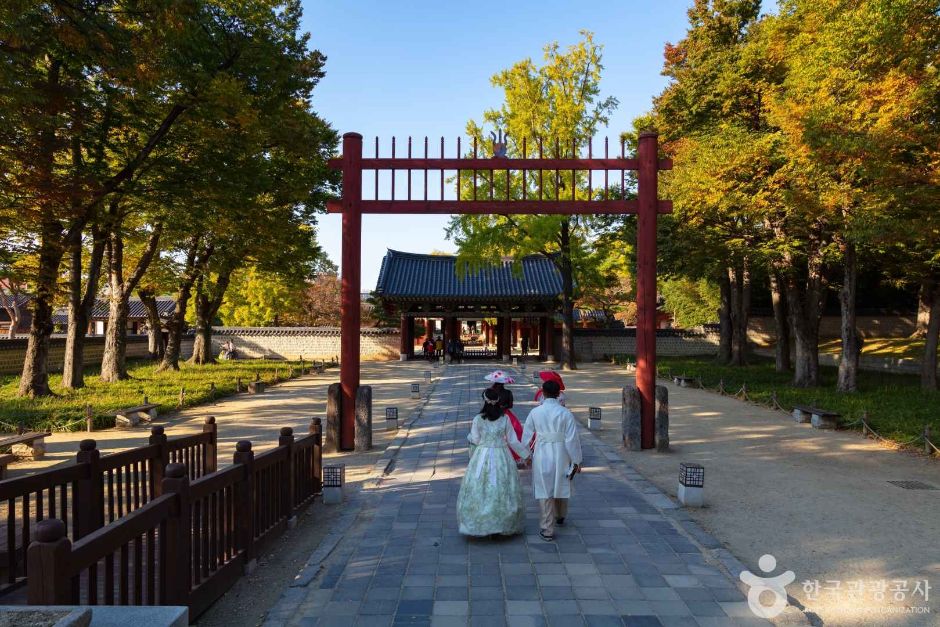
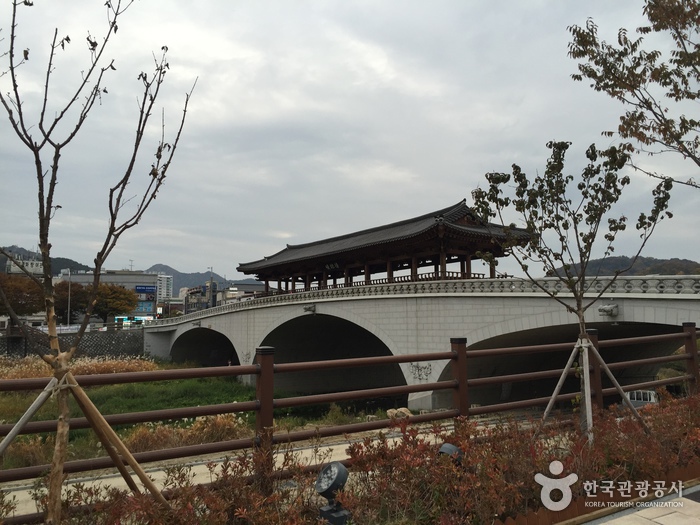
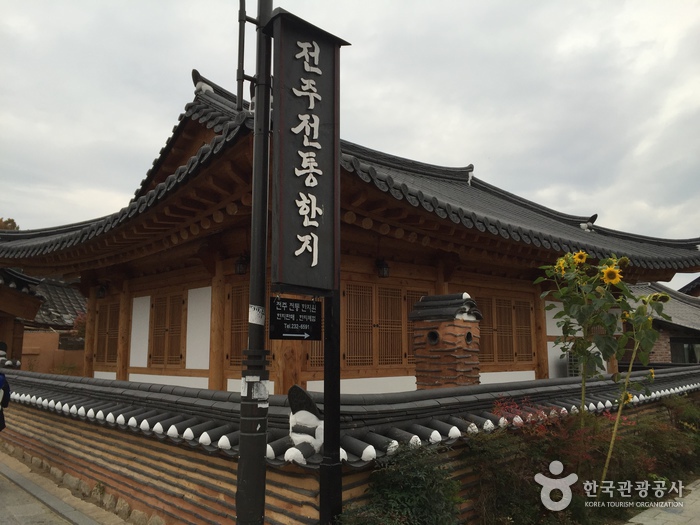

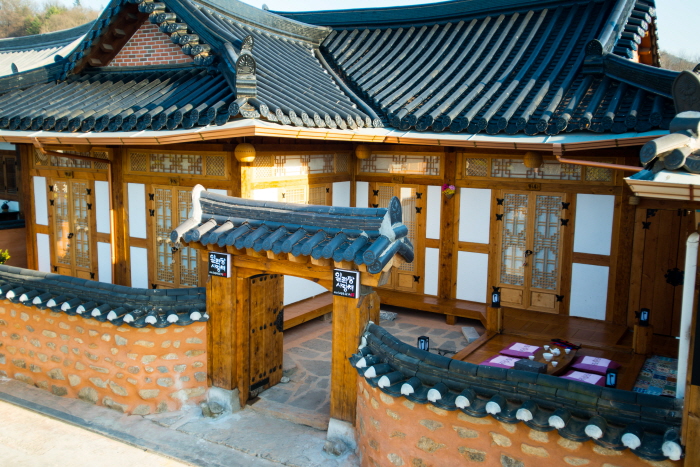

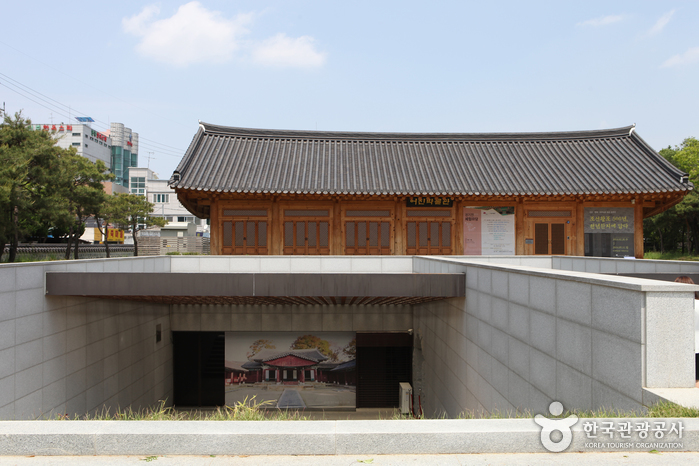
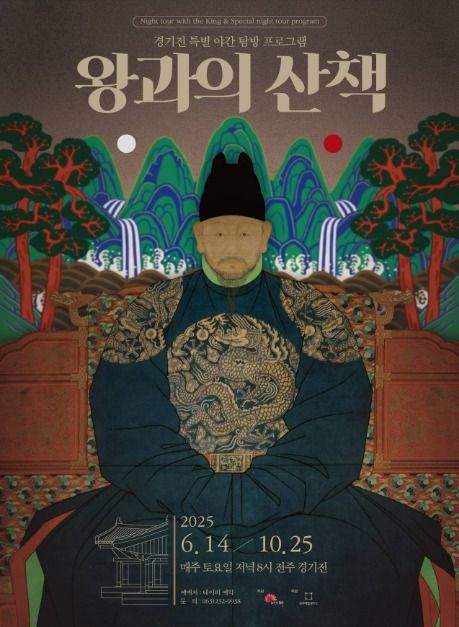
 Español
Español
 한국어
한국어 English
English 日本語
日本語 中文(简体)
中文(简体) Deutsch
Deutsch Français
Français Русский
Русский